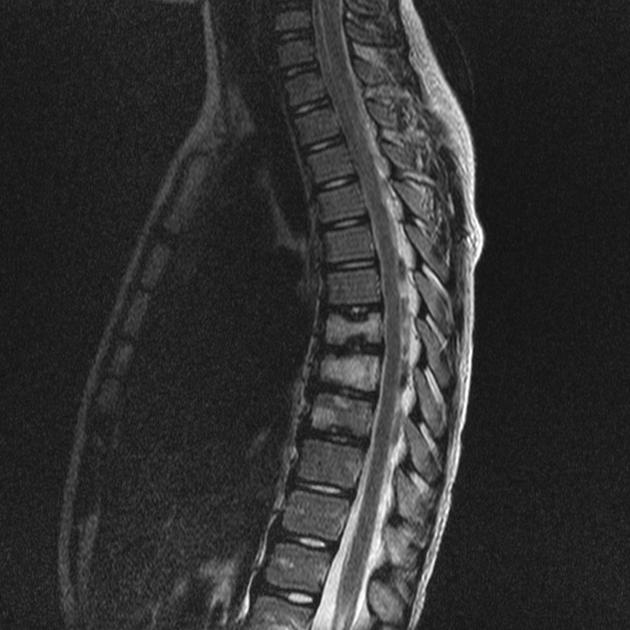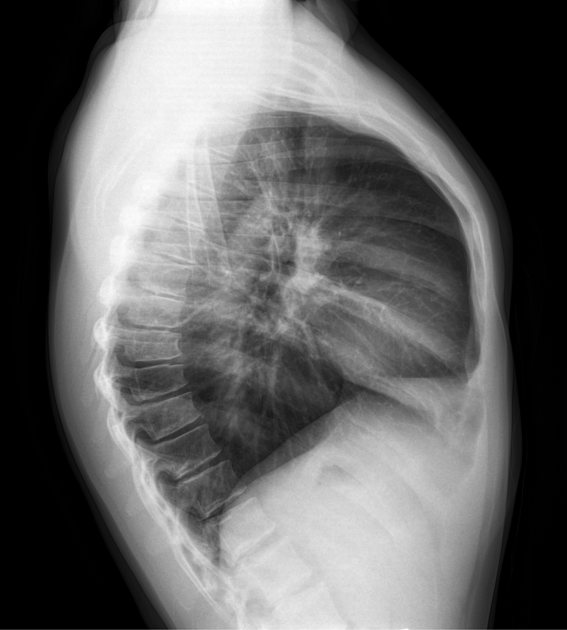Scheuermann disease, also known as juvenile kyphosis, juvenile discogenic disease 11, or vertebral epiphysitis, is a common condition which results in kyphosis of the thoracic or thoracolumbar spine. The diagnosis is usually made on plain radiograph.
On this page:
Epidemiology
occurs in ~5% (range 0.4-8%) of the general population 2
typical age of presentation is 12-17 years 13
slight male predominance
Associations
Pathology
Its exact etiology is unknown but a proposed mechanism is by osteonecrosis of the vertebral apophyseal rings. Excessive axial spine load due to heavy weightlifting may also contribute.
There is a strong hereditary predisposition (perhaps autosomal dominant) with a high degree of penetrance and variable expressivity.
Location
Occurs in the thoracic spine in up to 75% of cases, followed by the thoracolumbar spine combined and occasionally lumbar and rarely cervical spine.
Classification
type I (typical): thoracic spine only
-
type II (atypical)
affecting the lower thoracic spine and lumbar spine
some authors have proposed the term lumbar Scheuermann disease 4,5 for a variant affecting the lumbar region
Radiographic features
To apply the label of classical Scheuermann disease, the Sorensen criteria need to be met 9:
thoracic spine kyphosis >40° (normal 25-40°); or
thoracolumbar spine kyphosis >30° (normal ~0°)
and
at least 3 adjacent vertebrae demonstrating wedging of >5°
Other signs include:
vertebral endplate irregularity due to extensive disc invagination
intervertebral disc space narrowing, more pronounced anteriorly
Treatment and prognosis
Management is largely dependent on the degree of kyphosis:
<50°: conservative, stretching, postural changes
50-75°: brace
>75°: surgery
Some publications suggest surgical intervention is reserved for those with progressive kyphosis, intractable pain and neurological impairment 17.
History and etymology
It is named after the Danish orthopedic surgeon and radiologist Holger Werfel Scheuermann (1877-1960) who first described it in 1920 as osteochondritis deformans juvenilis dorsi 10,12.
A Danish orthopedic surgeon, Kaj Harry Sørensen, developed his eponymous criteria, based on the painstaking measurement of the wedging of 4,665 vertebrae 14!












 Unable to process the form. Check for errors and try again.
Unable to process the form. Check for errors and try again.